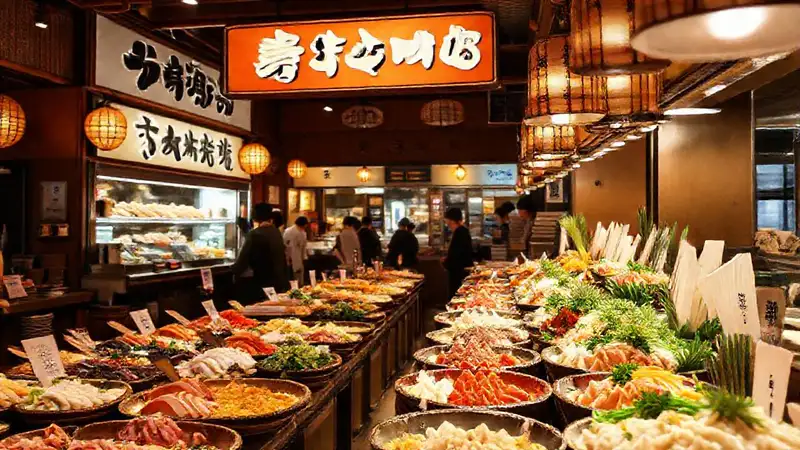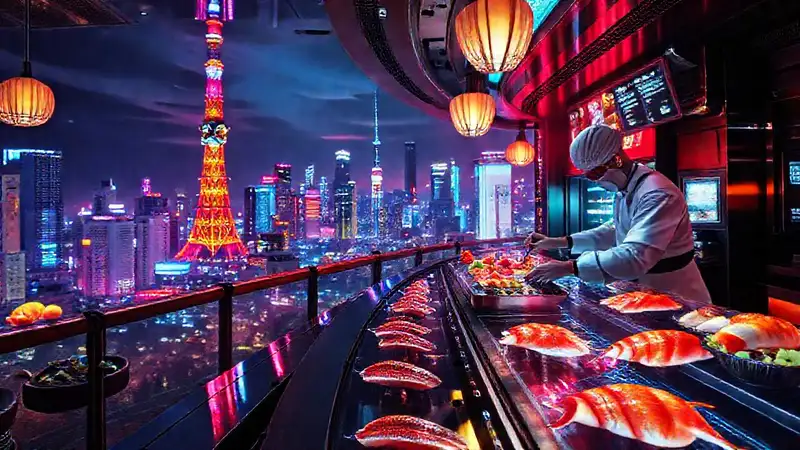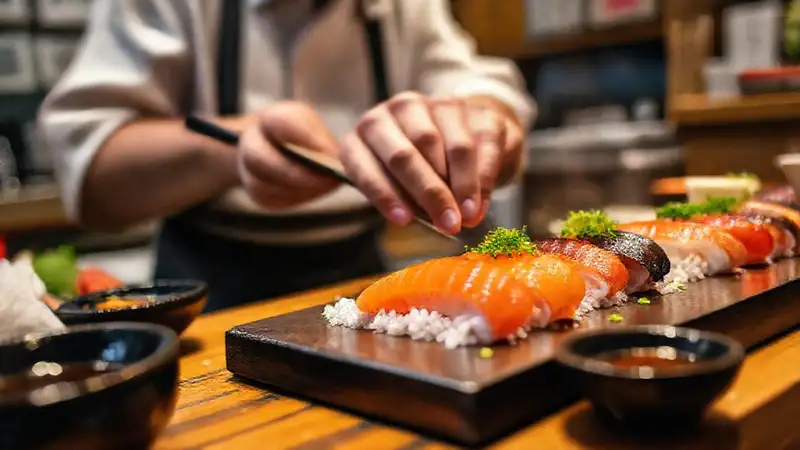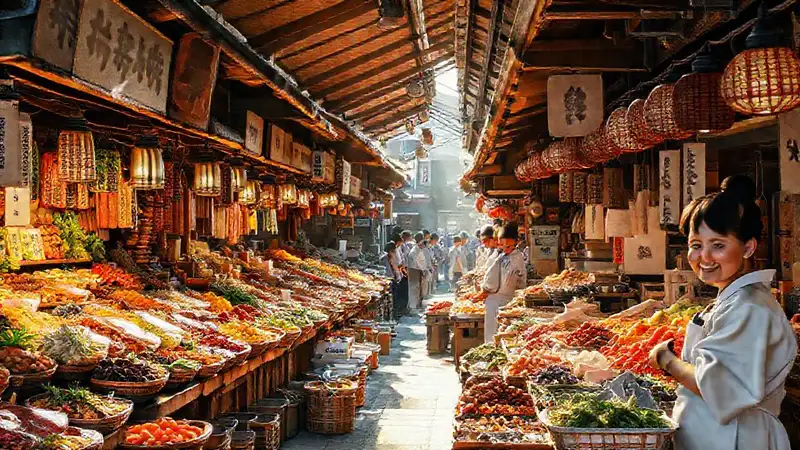Sushi, arguably Japan’s most globally recognized culinary export, isn't a monolithic art form. Instead, it’s a deeply regional tradition, with distinct styles varying significantly across the country. Each area boasts unique ingredients, techniques, and approaches to presentation, shaping sushi into a reflection of its local environment and cultural heritage. While Tokyo is often synonymous with high-end sushi, and Kansai is known for its elaborate arrangements, Hokkaido offers a significantly different experience rooted in its immense agricultural resources.
This exploration will delve into the core differences between these three major sushi regions, examining how their specific environments and traditions have shaped their distinct approaches to this ancient culinary art. We'll look at the crucial role ingredients play, the technical nuances involved, and ultimately, how each style resonates with the palate of its local population and visitors alike.
The Hokkaido Style: Sea and Farm
Abundant Freshness
Hokkaido’s sushi is arguably the most directly influenced by its incredible agricultural bounty. The region is famed for its unparalleled quality of seafood, largely due to its cold, clean waters and extensive river systems. However, the importance of locally grown vegetables is equally crucial; Hokkaido produces a remarkable variety of root vegetables, greens, and fruits, all incredibly fresh. This access to seasonal produce is a cornerstone of the Hokkaido style, offering a vibrancy rarely found in other regions.
The chefs of Hokkaido prioritize the natural flavors of their ingredients, often using vegetables lightly seasoned with just salt or a touch of vinegar to complement the fish. The emphasis isn’t on elaborate sauces or complex garnishes, but rather on letting the quality of the seafood and produce truly shine through. This straightforward approach allows diners to appreciate the purity and freshness of each bite. It's a testament to the philosophy of “shun” – utilizing ingredients at their peak ripeness.
Sashimi-Focused Techniques
Historically, Hokkaido’s sushi traditions leaned heavily towards sashimi – sliced raw fish – rather than fully formed rolls. This reflects the region's historical reliance on abundant wild fish catches, leading to a preference for showcasing the fish in its purest form. While makizushi (rolled sushi) does exist, it’s often presented more simply than in Tokyo, prioritizing the quality of the fish over elaborate wrapping.
The use of nori (seaweed) is often minimal, and the rice is frequently seasoned with a lighter vinegar, preserving the delicate flavors of the fish. The presentation is characterized by a rustic elegance, mirroring the unpretentious nature of the region itself. The focus is less on visual complexity and more on demonstrating the freshness and deliciousness of the ingredients.
The Kansai Style: Elaborate and Ornamental

The Rise of Kaiten-zushi
Kansai, encompassing the Osaka and Kyoto areas, is the birthplace of kaiten-zushi – conveyor belt sushi. This incredibly popular style, initially developed in Osaka, revolutionized sushi consumption by making it accessible and affordable to the masses. This reflects the dynamic and bustling culture of the region and a strong desire for quick, satisfying meals.
However, Kansai sushi goes beyond the conveyor belt. It is renowned for its elaborate and intricate arrangements. Kaiten-zushi restaurants are filled with dishes meticulously crafted, showcasing a dazzling array of colors, textures, and flavors. The presentation is a key element, and chefs invest significant time and effort in creating visually stunning plates, almost resembling miniature works of art.
Variety and Innovation
Kansai sushi is significantly more diverse than sushi from other regions. It features an extensive selection of toppings, sauces, and accompaniments. You’ll find a much wider range of fish, including lesser-known species, and creative combinations of ingredients. Tsukemono (Japanese pickles) play a prominent role, adding a refreshing and tangy counterpoint to the richness of the fish. The willingness to experiment and innovate is a defining characteristic of Kansai’s sushi scene.
The Tokyo Style: Precision and Refinement
The Art of Edomae Sushi
Tokyo’s sushi traditions are deeply rooted in the Edomae style, which developed during the Edo period (1603-1868). This style prioritized the preservation of fish through aging and salting, techniques essential for a city where fresh seafood was limited. The emphasis was on skill and craftsmanship, with chefs painstakingly preparing and seasoning each piece of fish to maximize flavor and texture.
Edomae sushi involved meticulous attention to detail, from the careful shaping of the rice to the precise cutting of the fish. The chefs were highly respected artisans, inheriting their skills through apprenticeships and dedicating their lives to perfecting the art. The focus remained on showcasing the natural flavor of the fish, subtly enhanced through careful preparation.
Michelin-Starred Excellence
Today, Tokyo is home to some of the world’s most renowned sushi restaurants, many of which hold Michelin stars. These establishments exemplify the refined techniques and unwavering pursuit of perfection that define the Tokyo sushi style. The presentation is understated and elegant, with a minimalist aesthetic that focuses on showcasing the quality of the ingredients. The service is impeccable, and the entire dining experience is designed to be a deeply immersive and memorable one.
Conclusion
Ultimately, the regional variations in sushi – Hokkaido’s reliance on agriculture, Kansai’s elaborate presentations, and Tokyo’s refined techniques – reveal a fascinating story of adaptation and innovation. Each style reflects the unique environment, history, and cultural values of its respective region, solidifying sushi’s position as more than just a dish; it's a living tradition. Exploring these differences provides a deeper appreciation for the versatility and enduring appeal of this iconic Japanese culinary art.
The beauty of sushi lies in its ability to connect with its local surroundings, utilizing seasonal ingredients and reflecting the spirit of its region. Whether it’s the simple elegance of Hokkaido, the vibrant energy of Kansai, or the meticulous precision of Tokyo, each style offers a distinctive and unforgettable experience for the discerning diner.
 How does Tokyo’s tradition ensure high standards
How does Tokyo’s tradition ensure high standards What are some traditional Oaxacan drinks to pair with tlayudas
What are some traditional Oaxacan drinks to pair with tlayudas How do you pair tlayudas with different types of salsas
How do you pair tlayudas with different types of salsas How does Hokkaido's mountainous terrain impact seafood
How does Hokkaido's mountainous terrain impact seafood How does the seasonality affect Kansai sushi
How does the seasonality affect Kansai sushi What makes Tokyo’s sushi a celebrated art form
What makes Tokyo’s sushi a celebrated art form How does Tokyo’s innovation affect sushi’s evolution
How does Tokyo’s innovation affect sushi’s evolution Can you detail Tokyo's nigiri rice preparation
Can you detail Tokyo's nigiri rice preparation How does Kansai’s culinary heritage shine through
How does Kansai’s culinary heritage shine through
Deja una respuesta